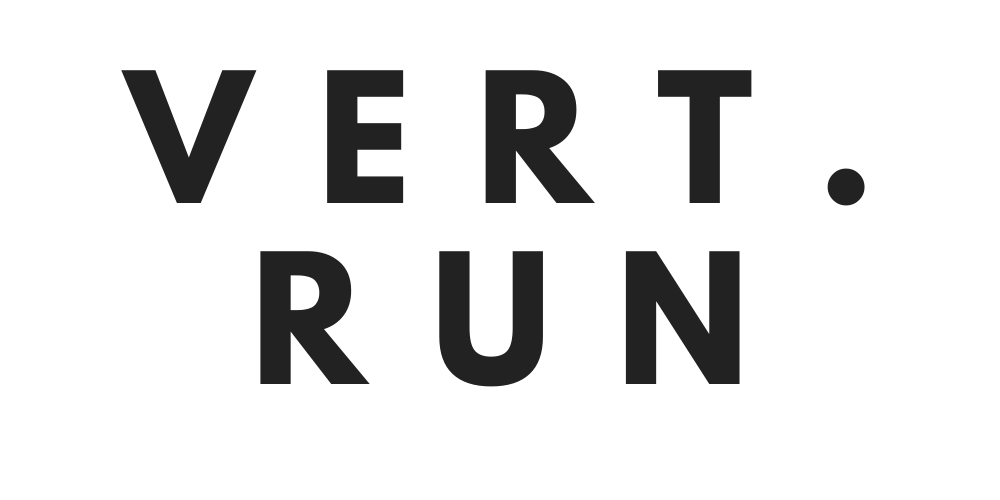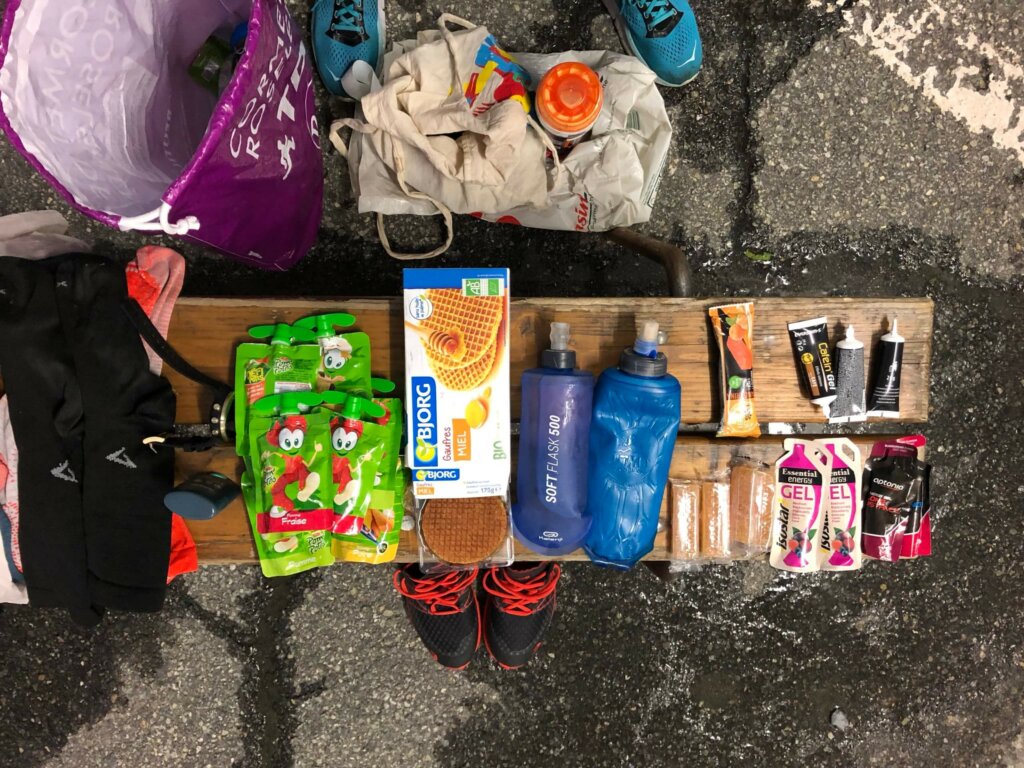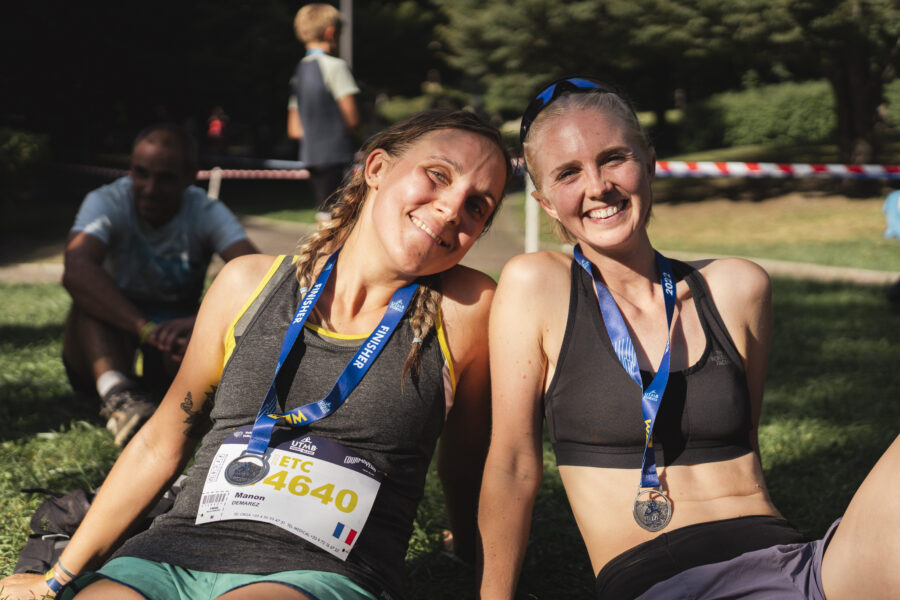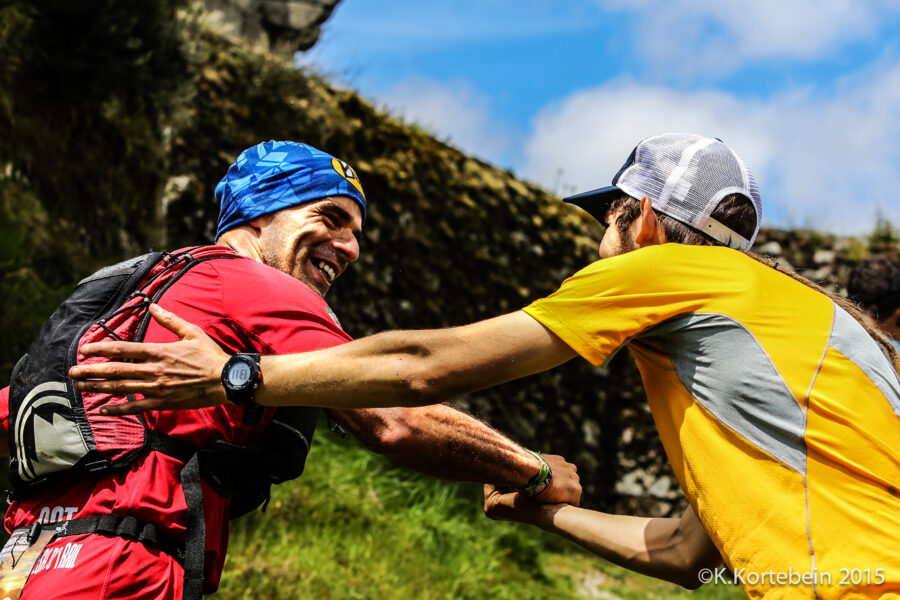There are a lot of myths and misconceptions out there when it comes to trail running. (Our #1 favorite misconception: the idea that trail and ultrarunners run every step when they’re running a race. THAT’S TOTALLY FALSE! There’s a ton of walking in trail and ultrarunning!)
One of our main goals and missions at Vert.run is to de-mystify the sport of trail running and ultrarunning, and to open the door really wide and show you that you belong here too. And one of the ways that we do that (in addition to our free training plans, affordable coaching and awesome community) is by putting all these myths right out in the open, and setting everything straight.
In this blog post, we’re going to walk through a lot of common trail running myths and misconceptions–and even if you’re an experienced veteran ultrarunner, there’s good info in here for you, too.
The format of this article is a transcript of a podcast episode from our popular trail running podcast “Running Long,” which is hosted by Vert.run coach Francesco Puppi.
In this blog post, Francesco (who lives in Italy) interviews our co-founder and Vert.run coach Max Keith (who lives in Chile) to talk through all the questions they get asked by our community of over 80,000 trail runners who train with Vert.run. Enjoy!
Note: the transcribed version here in this article is a little shorter than the podcast itself. If you want the full conversation (and want to get to know Fran and Max!) give the podcast a listen during your next long run or commute. It’s a great conversation and way to open your mind to new ideas and tips…and honestly their convo is really cool. You’ll feel like you’re hanging out with them!)
Francesco: Welcome back to Running Long, the podcast by Vert.Run. I’m your host, Francesco Puppi and today, I’m joined by Max Keith, one of our coaches and co-founders here at Vert.Run. Today, we will try to clarify some questions on training, racing and recovery.
Max: Thanks for having me on the podcast–I’m excited to dive into some classic questions on running and training.
Francesco: First we are going to talk a bit about training. The first question from our users is:
- Do we need to train in the mountains every day or every week to become a good trail runner?
- Can you be a good trail runner, even if you live in a flat area or a city?
Max: That’s such a great question. Many people who trail run don’t typically live in places where they have 3,000 feet of vert right outside their door.
I’m a big believer that you can do well at running trails or running an ultra even if you live in a flat area. You definitely have to be creative and take advantage of stairs or go to the gym and use the stairmaster or treadmill, but I still think it’s possible.
Francesco: Another good thing you can do is get into the mountains or on the trails once a week or twice a month. As long as you get a few longer runs on similar terrain to what you will be racing, you should be prepared for your event. Even for someone like myself who lives in the mountains and has access to trails, it’s important to remember that you don’t need to run trails every day and training on flat terrain or focusing on speed work is also very important.
Another question we get asked frequently is:
- Should you be hitting a certain weekly milage or elevation gain in order to train properly?
Max: This is a tough question and probably one with many different answers. For my training, I like to track the hours I spend training, also known as time on feet. I typically do races and training runs with a lot of elevation gain, so sometimes that is a better measurement for me than mileage because the terrain might be technical, I might do a lot of power hiking, and I may not run that far in miles but the overall effort in hours is quite long. I suppose it depends a lot on the type of race you are training for and the terrain you plan to cover.
Want to take the guesswork out of how to train for your next trail race or ultramarathon? Check out our popular training programs here.
Francesco: I agree. The focus should be taken away from weekly elevation or weekly mileage, but really focus on the quality of training and intensity of your workouts. The other point I would mention is really taking advantage of back to back long runs, especially when training for an ultra. For example, if you are training for a 100k or 100 miler, you might do a 6 hour long effort one day followed by a 2 hour run the next day. This allows your body to adapt and recover better than if you had done a super long, let’s say, 12 hour effort in one day. That being said, this all depends on your running background, the type of athlete you are, and your current ability level.
Max: One last thing I would add is, regardless of your weekly mileage, try to make your training as specific as possible.
Study the race course and elevation profiles and try to replicate some of that in your training so your body is prepared as best as possible for race day.
Francesco: What is the best substitute for an uphill training session if you don’t have mountains close to where you live? What suggestions do you have for people who don’t have big mountains that they can run during the week, for example?
Max: One of my top suggestions would be to find access to a good treadmill if possible and utilize the incline if you don’t have the opportunity to run mountains outside. Another good option at the gym is the stairmaster which can be great especially for races where you might be doing a bit of power hiking.
If you don’t have access to a treadmill or stairmaster, my suggestion would be to focus on strength training, working specifically on your quads and lower legs. Personally, I like to incorporate a lot of plyometrics– training that uses speed and force of different movements to build muscle power.
Oftentimes, people focus on or are most worried about going uphill, but usually it is the downhill that will burn up or fatigue your muscles, so it’s important to focus on that in your training as well.
Francesco: I agree, and it’s important to remember the importance of strength training even for those of us who do have access to mountains and trails.
Francesco: Let’s talk a bit about walking during your training or racing. One very common question that I get asked is:
- When should I walk and when should I run during training or a race?
Max: I think it’s definitely a huge misconception that you have to run all the time during your training and races.
Especially if you are doing an ultra marathon, you are almost certainly going to walk or hike at some point during the race and it’s smart to practice that in your training. A lot of times power hiking is a great way to save energy and keep your legs and body from fatiguing during a long race.
Francesco: After all, running is about finding the most efficient way to progress or move through the mountains. So, even on a short race, if you have a very steep, technical climb, it might be more efficient to walk instead of running. For some athletes, power hiking can actually be faster than other people who are running the same section.
Francesco: Let’s talk a little bit about gear. We get a lot of questions around poles, trail running vests, running belts, etc. First, let’s start with poles.
- When it comes to poles, when is it more efficient? Or when is it better to bring polls and when is it not?
Max: For poles, I think it has a lot to do with what feels best for each individual athlete and the type of terrain you are going to be running on. Regardless, if you want to try using poles for a race, you need to train and practice with them a lot so you are comfortable handling them and storing them when you need to, and so your body can adjust physically to using them.
Francesco: I’ve personally only used them for hiking, but I know a lot of athletes find them useful for VKs which are very short, steep races where poles can usually help quite a bit. Another example would be for long distance races like 100 milers where there is a lot of elevation gain or loss. And it’s always good to make sure that the race you are doing allows the use of poles if you are planning on using them on race day.
Want to take the guesswork out of how to train for your next trail race or ultramarathon? Check out our popular training programs here.
Francesco: What is the best trail vest or running belt that you use for racing?
Max: If I can carry all my mandatory gear in a belt, I’ll usually go with a belt. A lot of races nowadays require more and more mandatory gear, so sometimes I do have to use my trail vest, especially for longer races.
Francesco: I like the belt too. I try to go as light as possible and belts can fit quite a lot of gear surprisingly.
Typically, I can carry a soft flask, safety blanket, whistle, cell phone, and a small waterproof jacket all in my trail belt.
There are definitely times where I need to pack my trail vest to fit all the mandatory gear for a race. My advice would be to make sure you train with whatever vest, backpack, or belt you plan to race with and practice with it fully loaded so you know what that will feel like during your race.
Francesco: Let’s move on to fueling. Fueling is a big part, not just of racing, but also training. Taking in fuel during long runs and races is key and it’s important to find a strategy that works well for you by testing and trying different types of food and nutrition and practice that strategy in your training.
Max: Definitely. And I want to point out the cool interview series you’ve been doing with On Pace Wellness–I’d encourage everyone to check out those episodes for tips on fueling and nutrition in general.
Just like we talked about with gear, whatever you decide to do in terms of fueling–whether it’s gels, salts, chews, fluids, etc–you have to practice your fueling in training.
Francesco: Another question I get asked a lot from my athletes is:
- What pace should I start out at during my race?
One thing I usually recommend is not to focus too much on pace but more on effort not only on race day but throughout your training as well. Because of the variability of trail running, the focus is more on perceived effort and intensity rather than pace. During the start of a race, I think it is important to control your perceived effort–ideally I try not to really “run” or put in harder effort until as late in the race as possible.
Max: When you are at the start line, the most important thing is to control all the excitement and energy you have–because it’s easy to start out too fast. If you can manage your effort for the first half of the race within your limits, you have high chances of being able to close strong at the finish. I always try to remind my Vert.run athletes to relax and “run your own race”, and not let other runners influence how fast you go.
Francesco: I think the most common mistake is to go out too fast. And, of course, you’re going to pay for that in the second part of the race. Try to keep your effort under control.
Francesco: Lastly, let’s talk a little bit about tapering.
- A lot of runners wonder how long before a race should they start tapering?
Max: When it comes to tapering before a race, a lot of people taper anywhere from 10-14 days before a race meaning they reduce the volume and intensity of their training.
This is a highly personal decision and the amount of time and training during this time will be different for everyone. In my opinion, I always aim to be a bit more conservative with my tapering strategy rather than the other way around.
I will often take more relaxed days versus trying to squeeze in any additional training even though it’s tough for me and many other runners to take this kind of a break from normal training.
Francesco: It’s always a tough balance and one of the most challenging aspects of training. I have tried different methods and strategies for tapering, some being very short and some being over two weeks. It really depends on the conditions and how you’re feeling coming into your race.
Max: I try to remind my athletes that it’s always better to take an extra rest day than to push an extra training session especially in the week or so leading up to your race. It’s important to save that energy and stay off your feet during your final preparation.
Want to take the guesswork out of how to train for your next trail race or ultramarathon? Check out our popular training programs here.
Francesco: The final question for today is on recovery.
- What do you do to prioritize better and faster recovery?
Max: First and foremost, I prioritize sleep. It’s easier said than done, but more sleep and more quality sleep is something I focus on and I’ve seen great results in my training and performance when I pay close attention to how much I’m sleeping.
If I know I have a big training week coming up, I will try to get to bed earlier or sleep in a little later–even if it’s only 30 minutes, I do think it makes a big difference.
Francesco: It’s a balance of several factors and one other factor I would note is nutrition.
You’ve got to make sure you eat enough protein and carbohydrates and fuel after your workouts–ideally within 30 minutes after you finish your run or workout in order to replenish those glycogen stores quickly.
Beyond nutrition, I would focus on recovery and making sure to take easy sessions really easy by focusing on your perceived effort.
Francesco: When should we as athletes and runners take a rest day? Instead of following the training plan, when do you decide to take an unplanned rest day?
Max: There are a few things that are good indicators for me if I am on the fence about taking an extra rest day.
If I had a really bad night’s sleep, or I’m feeling like I’m on the verge of getting sick, or if I’m not feeling excited to get out mentally.
Sometimes if my body isn’t feeling up to running physically, I will grab my bike and go out for a ride instead, which can be a great active recovery.
Francesco: When I’m trying to decide whether or not to take a rest day, I like to ask myself–what is the benefit of the training session that I’m about to do? I think this question should help you understand if you actually need this session and if it’s going to add something to your training, recovery, wellness, or not.
Resting can be a critical part of the consistency of training and it’s important to consider the bigger picture and longevity of your training.
Francesco: Thank you for joining Max and I today. We hope that you’ve learned something and you’ve found some helpful information during our Q&A session.










